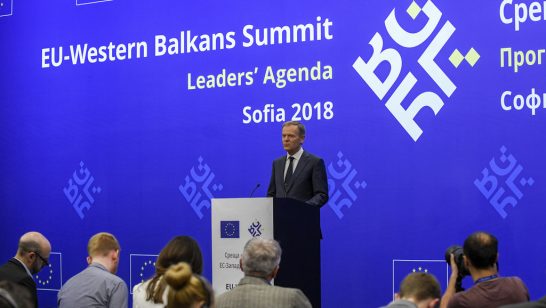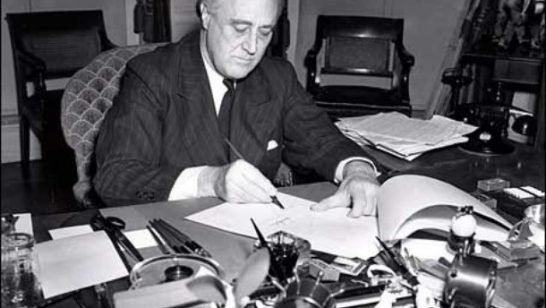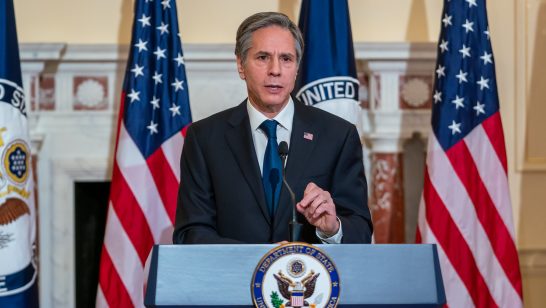
Preserving, strengthening and modernising conventional arms control in Europe does not seem to be high on thepriority lists of either NATO members or Russia. The lack of an effective conventional arms control regime does not ring alarm bells as there is a general feeling that the NATO–Russia relationship is stable. Also, conventional arms control does not have as much public and global appeal as nuclear arms control. In contrast to missile defence, it is not presented as a possible “game-changer” in NATO–Russia relations.
Still, continuation of a deadlock in conventional arms control in Europe may lead to negative consequences. The more the current stalemate becomes a matter of routine, the greater the danger that the arms control mechanism will not be available when needed. In a couple of years from now, gaps in the knowledge of NATO members and Russia about their military capabilities and deployment abilities will widen. Any benefits of the CFE Treaty that may still remain would vanish with new developments in military technology and a further decline in the role of the five categories of military equipment limited by the treaty. Intelligence data does not provide a level of confidence similar to that received from the official data exchange and verification mechanisms included in the Treaty. So mutual trust may incrementally deteriorate, leading to misconceptions about the other side’s intentions, worst case assessments and a military build-up.
Working on improving conventional arms control would take some time. One of the obstacles to any progress is that bureaucracies in many European states have entrenched themselves in long-held positions. There seems to be limited openness to new ideas and concepts. In many European capitals there has not been a thorough reassessment as to which arms control instruments are a matter of the past and whether some alternative means may be of greater value.
Benefits of Transparency-centred approach
A good option of starting to think anew about conventional arms control is to test whether the new system can be based solely on transparency measures. With such an approach, the CFE Treaty would be replaced by a system of transparency measures that are verifiable, legally binding and go beyond measures encompassed in the existing confidence- and security-building measures, particularly the 2011 Vienna Document and the Open Skies Treaty. Crucially, the new conventional arms control mechanism would not include any numerical, qualitative or geographical limitations.
For a variety of reasons, the transparency-centred approach offers a promising path forward to building an enduring platform that would maintain predictability, confidence and stability in Europe.
First, transparency measures seem more practical than limits when an understanding of military stability is in flux. The impact of some military capabilities, for example UAVs, on the conduct of offensive operations is hard to assess. Currently it seems overly demanding, if not impossible to set multilateral limits on new types of military equipment that would supplement the five categories of military equipment limited by the CFE Treaty. Agreeing on transparency measures related to different military capabilities seems easier than achieving an agreement to set limits on them.
Second, transparency mechanisms have greater potential than limits for adaptation to the new developments in military technology and doctrine. Once limits on certain military equipment are set, it is extremely hard to agree on limits on additional categories. A transparency-centred approach would offer more long-term operational flexibility than do limits, as countries are free to adjust their force posture to changing military requirements. After an agreement on limits is concluded, the introduction of any new military capability could be seen as destabilizing.
Third, transparency measures offer opportunities for a closer approximation of the quality of military capabilities. They could enable a country to evaluate and verify what military forces can and cannot do, including deployment speed and network-centric warfare, intelligence and reconnaissance capabilities. Also, only transparency measures can grasp the changing quality of military capabilities. Confidence derived from numerical limits may be illusive.
Fourth, in case of the NATO-Russia relationship, transparency measures could be more practical than setting pan-European or subregional balances of military forces.
The concept of a military balance between NATO and Russia seems obsolete after the end of the Cold War. The military forces of the NATO members and Russia are not designed against each other. Practical obstacles to establishing a balance (not necessarily numerical equality) between NATO members and Russia further complicate the idea. How could such a balance be designed, taking into account the divergence in military capabilities and quality, and how long it could be maintained??
A military balance at the subregional level is also hard to establish. Even if limits are set, the introduction of a new capability or some qualitative change may alter the situation. Also, subregional ceilings are of decreasing importance compared with the growing mobility of military forces. Ceilings are not necessarily more effective than transparency measures in preventing regional conflicts. During its war with Georgia, Russia’s forces remained below the CFE/ACFE flank ceilings.
Instead of focusing on limits and the military balance, it seems more useful for NATO members and Russia to agree on transparency measures that would enable them to keep track of overall military capabilities and their evolution, the introduction of new equipment, organisational structures and doctrines and exercises that test their military capabilities in practice. A comprehensive picture of military forces would provide both NATO members and Russia with predictability and an early-warning mechanism about a rapid build-up of forces. To provide more confidence at subregional level, a pan-European transparency-based mechanism could be supplemented by more extensive and tailored subregional arrangements.
Fifth, a transparency-centred approach could allow for de-linking conventional arms control from efforts related to Russia’s and U.S. non-strategic nuclear weapons based in Europe. Treating conventional and nuclear forces as part of one negotiation package or as issues not officially linked but influencing each other increases the risk that progress can be blocked in both areas.
Last but not least, a transparency-centred approach may in the long term contribute to the creation of the foundations of a broader European security system. Although it seems currently unlikely, both NATO members and Russia may in the future find common ground and agree on transparency measures related to non-strategic nuclear weapons and missile defence. Conventional arms control could be used as the first step in this direction.
The way ahead
A transparency-centred focus could provide predictability and confidence for NATO members and Russia in periods of an uncertain or changing military balance, both on the pan-European and subregional levels. It could allow for a means to bypass some practical problems linked with numerical limits.
Moving ahead with a discussion on a transparency-centred approach would require, however, that policymakers consider some of the uncertainties and risks that such an approach may entail. For example, concrete transparency measures for various types of military equipment and capabilities are still far from being developed and their cost-effectiveness is uncertain. It is also possible that to provide greater reassurance in the near term, an agreement on transparency measures would have to be supplemented with a set of unilateral political statements that would pledge restraint in the deployment of some military capabilities in specific geographic areas. The transparency-centred approach seems also insufficient outside the NATO-Russia context, in areas where hostile intentions are visible and there is a risk of direct military confrontation.
A transparency-centred arms control mechanism may be an attractive option to consider by Poland and other Central and Eastern European NATO members. With further NATO members anxieties related to the possible presence of Russian nuclear weapons in Kaliningrad, with Russia establishing military countermeasures if the U.S. implements its missile defence plans in Europe, and the modernisation of armed forces in the region, there is a risk of re-militarisation of the Central and Eastern European security landscape. There is a need for work on mechanisms that may decrease such a risk by instilling some basic confidence.
Thus, Poland with other NATO members from the region may consider an idea for reinforced transparency mechanisms for Central and Eastern Europe with the participation of Russia, Belarus and other states willing to join. If Central and Eastern European NATO members find a transparency-focused approach viable it could provide a boost for assessments by other NATO members in this direction.
This article is based on a longer paper “Rethinking Conventional Arms Control in Europe: A Transparency-Centred Approach”, PISM Strategic File, No. 7 (34), September 2013, available at: http://www.pism.pl/Publications/PISM-Strategic-Files/PISM-Strategic-File-no-7-34
The opinions articulated above represent the views of the author(s), and do not necessarily reflect the position of the European Leadership Network or any of its members. The ELN’s aim is to encourage debates that will help develop Europe’s capacity to address the pressing foreign, defence, and security challenges of our time.



